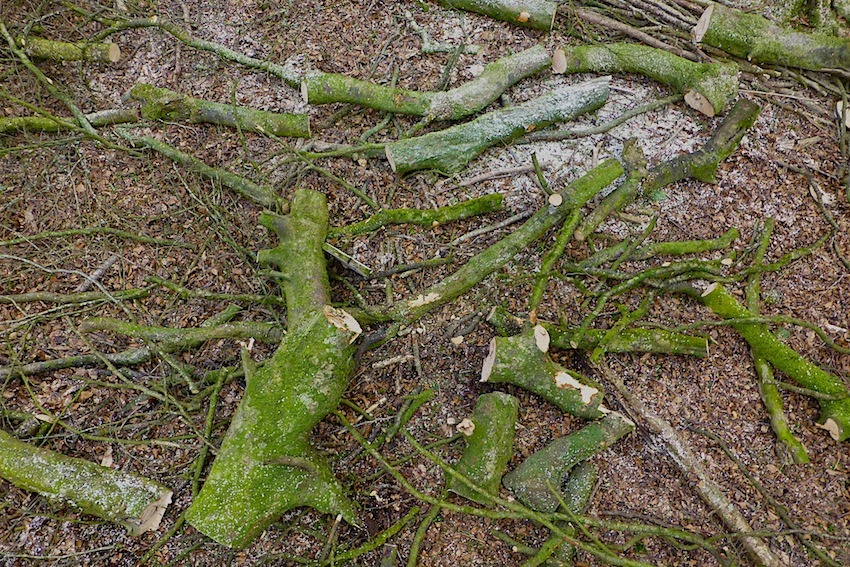Back in the late 60's they felled most of the trees here that had any timber value, leaving any that were gnarly, forked or badly barked by the cattle that wintered beneath them. Some had been pollarded, perhaps to feed the cows in late summer and are now growing thick, multi stemmed and greedy for any available sunlight.
We over- wintered our cows here in '95 and '96 and the neighbour's pygmy goats used to be frequent visitors, leaping the fence to feed on anything and everything that grew there. Add red deer, roe deer, wallabies and hordes of marauding grey squirrels and it's a wonder that there are any trees here at all.
Natural England suggested we took down all the beech trees as they were not native to the area and they were keen to see a return to ancient woodland species like oak and thorn, but beech trees bring something else to the woods, not least the luminous green moss that coats their trunks like velvet socks.
Although we have decided not to follow Natural England's advise, some of the beech that have been most damaged by the squirrels are starting to shed big limbs. Beech are also notoriously shallow rooted and so we have started to take out some of the weakest trees opening up the canopy to let more light in to the woodland floor.
 |
| Some of the trees were leaning over shading out the younger trees beneath |
 |
| The long crack running up through this trunk makes it ideal insect habitat. |
Beech was traditionally used for furniture making up around the home counties, but this beech wood has a distinctly Cornish character to it and doesn't easily lend itself to fine woodwork. It would be shame though if it was all to end in the wood burner, so there are plans to make some big bowls and a wooden spoon or two.




No comments:
Post a Comment